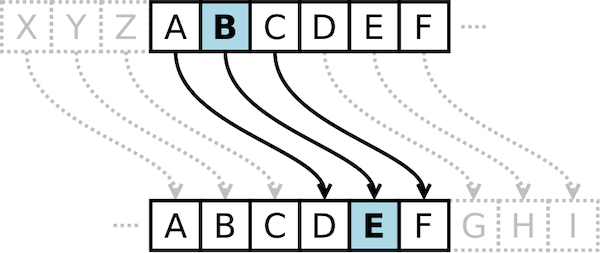An Introduction to Blackbrim: 1876
Welcome to Blackbrim: 1876, an immersive puzzle adventure! This game is brimming with puzzles to solve as you work to save the missing police force. To get started, first read the “Read Me First” pamphlet in your box. Then, open up Part I and go through the materials. Read the letters and peruse the clues left behind by Reager. Then, come back to this introduction after you’ve done that.
Part I Puzzles
As you have learned from Commissioner Farodson’s letter and Reager’s letter, Part I includes a map and 5 main puzzles:
- A newspaper clipping
- The four photos
- A restaurant bill of fare
- A spelling bee flyer
- Three circular ciphers and one square cipher
Each puzzle encodes a secret word or phrase that you must figure out. This resulting word or phrase will clue you into a location on the map, as Reager noted. Some secret words or phrases might be the name of a location. Others may be a clue to a location. For example, if a puzzle’s hidden phrase was “Sailor’s Beacon”, you would be able to identify the lighthouse as the location on the map.
Once you find all 5 locations, you’ll need to use this information to discover the final location of the missing police force! Solving this final puzzle marks the end of Part I.
Puzzle-Solving Tips & Tricks
Want some general puzzle tips that will be useful for some of the puzzles in Blackbrim?
-
General puzzle-solving tips for Part I
- Keep an eye out for words or phrases that stand out in some way (bolded, italicized, capitalized, titles on materials, strange phrases etc.). These may be clues to solve the puzzle.
- Sometimes to get to a puzzle answer, you need to unscramble letters to get a word. You can either try to unscramble these yourself or use an online anagram solver.
- You are always welcome to use the Internet to help solve any puzzles.
- Indexing is a common tool in puzzles to encode a secret word or phrase. Numbers are used to count (or “index”) into the words or phrases to extract new letters.
For example, if there was a sentence: “How are you?”
Followed by the numbers: 1, 2, 2, 5, 4, 7
This encodes the secret word: “hooray”
How? The 1st letter is h. The 2nd letter is o. The 5th letter is r. The 4th letter is a. The 7th letter is y. (In this case, spaces are ignored.)
-
Additional puzzle-solving tips for Part II
- If you haven't already, check out the tips for Part I (above), since some will be useful for Part II as well.
- Going between numbers and letters in the alphabet is a common tool for encoding secret words or phrases. Specifically: A = 1, B = 2, C = 3, D = 4, E = 5, ..., Z = 26.
-
Caesar ciphers are also a common form of encryption. This involves shifting letters by a fixed number to get new letters.
For example, say there this an encrypted word: XZB
The puzzle tells you to shift each letter forward by 3 to decode it.
Then, you decode the secret word: ACE

Source: Wikimedia
Viewing Hints & Checking Solutions
If you are getting stuck on any puzzle, don't hesitate to get extra clues from the Online Companion Guide. These will give you small nudges in the right direction to help you solve the puzzles. Especially if this is your first time playing this type of game, there is no shame in using hints! Even people who are familiar with this style of game generally use at least a few hints.
Once you have found a solution, be sure to input it in the Online Companion Guide! Sometimes, it will reveal information that progresses the story. At a minimum though, you will know if you are correct or not.
Playing in a Group
If you are in a group, this game will be a collaborative endeavor. Groups generally tackle the game in one of two ways:
- You can divide and conquer. Give each member of the group (or couple members) a puzzle to look at. If anyone gets stuck, you can always swap to get a fresh pair of eyes.
- Everyone can work on a single puzzle at one time. You’ll find that everyone thinks differently and brings fresh insights to the same material.